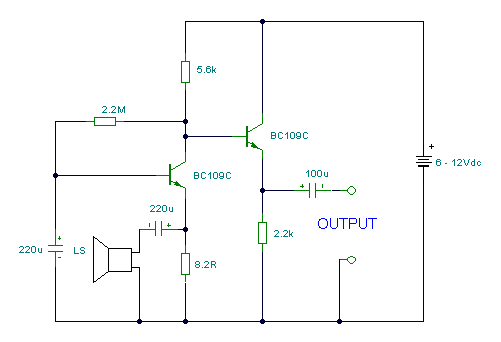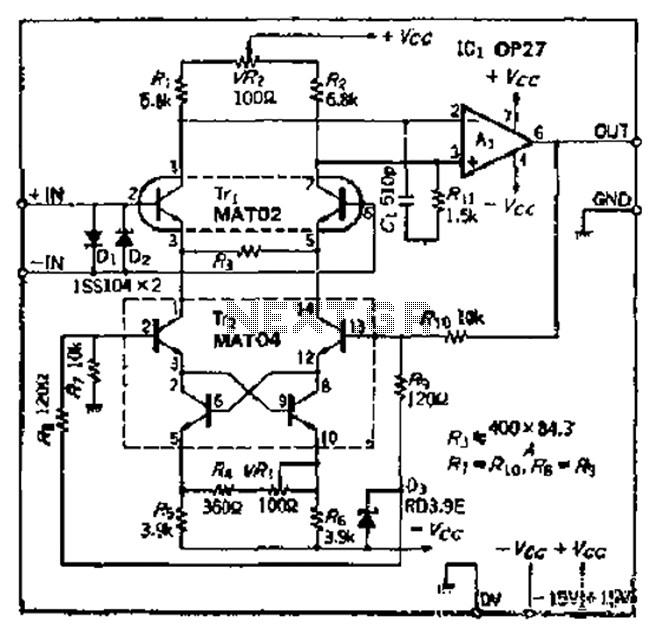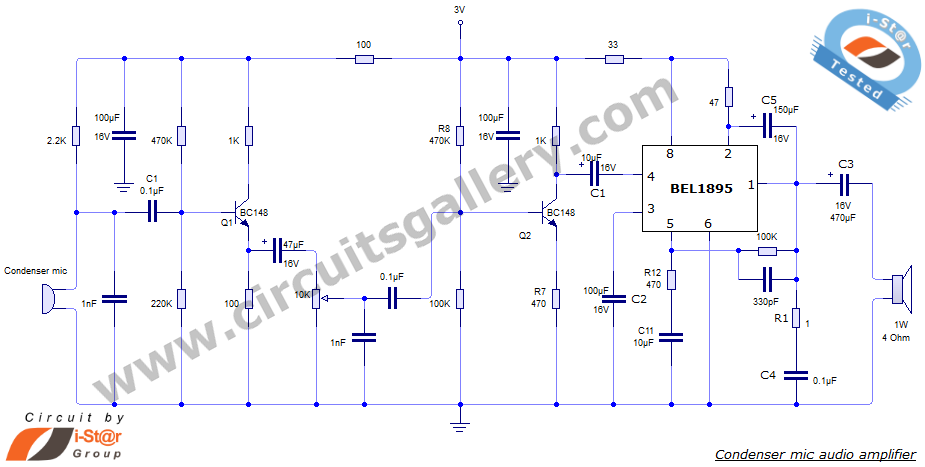
Balanced Microphone Preamplifier

The preamplifier is designed for use with dynamic (moving coil, MC) microphones that have an impedance of up to 200 ohms and feature balanced terminals. It is relatively straightforward.
The preamplifier circuit serves as a crucial interface between the microphone and subsequent audio processing equipment. It amplifies the low-level audio signals generated by dynamic microphones, which typically have a low output voltage. The preamplifier is engineered to handle an input impedance of up to 200 ohms, ensuring compatibility with a wide range of dynamic microphones.
The balanced terminal configuration is essential for minimizing noise and interference, particularly in professional audio environments. The balanced input helps to reject common-mode noise, which can be introduced through long cable runs. This is achieved by employing differential signaling, where the audio signal is transmitted over two wires with opposite polarities.
The circuit design of the preamplifier may include operational amplifiers (op-amps) configured in a non-inverting amplifier setup to achieve high gain without significant distortion. Additionally, proper power supply decoupling and filtering techniques are employed to maintain signal integrity and reduce power supply noise.
Overall, the preamplifier is a fundamental component in audio signal processing, providing the necessary gain and impedance matching to ensure optimal performance of dynamic microphones in various applications, including live sound reinforcement, studio recording, and broadcasting.The preamplifier is intended for use with dynamic (moving coilMC) microphones with an impedance up to 200 ? and balanced terminals. It is a fairly simple.. 🔗 External reference
The preamplifier circuit serves as a crucial interface between the microphone and subsequent audio processing equipment. It amplifies the low-level audio signals generated by dynamic microphones, which typically have a low output voltage. The preamplifier is engineered to handle an input impedance of up to 200 ohms, ensuring compatibility with a wide range of dynamic microphones.
The balanced terminal configuration is essential for minimizing noise and interference, particularly in professional audio environments. The balanced input helps to reject common-mode noise, which can be introduced through long cable runs. This is achieved by employing differential signaling, where the audio signal is transmitted over two wires with opposite polarities.
The circuit design of the preamplifier may include operational amplifiers (op-amps) configured in a non-inverting amplifier setup to achieve high gain without significant distortion. Additionally, proper power supply decoupling and filtering techniques are employed to maintain signal integrity and reduce power supply noise.
Overall, the preamplifier is a fundamental component in audio signal processing, providing the necessary gain and impedance matching to ensure optimal performance of dynamic microphones in various applications, including live sound reinforcement, studio recording, and broadcasting.The preamplifier is intended for use with dynamic (moving coilMC) microphones with an impedance up to 200 ? and balanced terminals. It is a fairly simple.. 🔗 External reference



%2B2%2BCH%2Bby%2BIC%2B%2BNE5532%2Bor%2BLF353.jpg)

